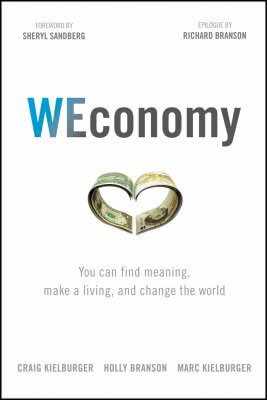Businesses are falling over themselves to get into the 'purpose industry', but are they actually making a positive difference?
If You Build It They May Not Come: How To Get Purpose Right
Businesses are falling over themselves to get into the 'purpose industry', but are they actually making a positive difference?

Our caravan plane descends onto the remote edge of the Maasai Mara grasslands. It’s nothing but lush green carpet for miles. The only sign is a handpainted rock, propped up like a monument stone, that reads “Bogani Heimark Airstrip.”
We disembark and are greeted by Wilson Meikuaya, a Maasai warrior and our guide. He’s outfitted in the tribe’s traditional plaid shuka and armed with a machete to fend off black mambas—lethally poisonous snakes native to sub-Saharan Africa. We pile into a lorry to visit Kishon, a local medical clinic.
The building had stood empty for two years, abandoned by a corporate development project. The clinic’s first benefactor had covered the cost of a structure and the great fanfare of an opening ceremony. Representatives cut a ribbon, snapped a photo, and left.
They neglected to hire doctors or partner with local governments to ensure that the clinic was actually operational. The result was a shiny new building, still with plastic coverings on the door handles—and zero medical care for the community.
Still, the villagers were hopeful; they pooled money to pay a gardener to maintain the grounds. For two years he kept it up, fighting the unruly grass with a machete (lawnmowers aren’t easy to come by in rural Kenya). The community reasoned that if the grounds and the building looked nice, the company would come back to resume the project. They never did.
No doubt there is a framed photo of the clinic in the lobby of a corporate headquarters somewhere.
A plan was laid with the best intentions, but without foresight, consultation with the community, or even short-term maintenance structures in place. Granted, this was a for-profit company and not a charity that specialized in delivering medical infrastructure to remote regions.
But even putting aside the bad development model, the failed clinic was just bad business. Even the most ardent capitalist, one who reduces charity projects to media impressions or brand reach, should see the flaw in the plan here. The clinic was a PR disaster waiting to happen.
The bad news is that purpose is often done poorly. No one assumes: “I’m going to wake up tomorrow and start a highly specialized multimillion dollar company” without proper training and experience.
And yet everyone assumes they can run a charity; they don’t consider that they will need to oversee development projects and manage contractors and foreign government relations. This mentality could explain the large number of charities popping up.
In England and Wales, one estimate puts the number of new charitable organizations at 6,661 in 2013, a 16 percent increase over the previous year*. In Craig and Marc’s homeland of Canada, there are more than 170,000 nonprofit organizations**.
Businesses must find a unique role in the marketplace, or risk failure. The same rule should apply to charities, but often doesn’t. As we’ll discuss later, not every new charity adds value.
Everyone thinks they can run a charity because everyone cares about a cause—and that’s admirable. But here’s the truth: good intentions do not always result in good work. It’s not easy to do purpose well. As with Kishon: It’s one thing to build a clinic, but filling it with doctors, nurses, and patients and delivering quality care is another thing entirely.
We’re not suggesting that companies stop funding development work—in fact, we’re really, really not suggesting that. On the contrary, WE Villages adopted the hollow building and turned Kishon into a functioning clinic with support from corporate and family donors (and youth fundraisers, of course).
One of those donors was Midmark, a multi-generational family medical equipment business based in Dayton, Ohio. The family helped revive the project, hire local medical staff with support from the regional government, and build wells and other infrastructure.
If anyone has the knowledge and reason to start a clinic, it’s the people running a medical supply company. Even with this experience, they still recognized the need to partner with an established organization.
The WE Villages model depends on these smart investments and mutual partnerships, both with benefactors and with locals. All development models should build in sustainability from the outset by partnering with local elders and governments.
You’d be surprised how often developing communities are not actually consulted about what they need. The first WE College is currently being built, an adjoining medical college next to our first permanent clinic, Baraka, at the community’s request, in order to train the next generation of nurses and technicians.
Volunteers can also visit the projects and stay invested. Medical trips run regularly to Kishon; specialists come from all over the world to share knowledge with local staff. When Holly visited, she spent a very rewarding day consulting with local physicians and visiting patients.
A business alone doesn’t have the resources to do any of this—integrate into overseas communities, ensure long-term success, and plan an exit strategy so that locals can take over. And yet so many companies spearhead development projects and other complex charitable programs.
The same strategy and discipline that goes into a business plan should go into making a purpose plan, but often doesn’t. None of us are afraid to admit that we learned this lesson the hard way. We know why the corporate clinic failed because we’ve experienced all of the same warning signs in our early work, with WE Charity.
In fact, our advice for people who often ask us about starting a charity is: “don’t!” (unless, of course, you’ve identified a serious need that isn’t being addressed). But there is good news. When purpose is done well, the social impact is sustainable, scalable, and effective.
Let’s be clear: when we say “don’t start a charity,” we are talking about a legally registered organization, with a special tax status and reporting structure. As a business or employee, you should absolutely start a charitable partnership or a purpose project that benefits an existing cause.
Why be just another digit to add to the 1.4 million charities in the United States alone? Your passion, energy, and drive will be better served agitating for positive change within your current organization, or volunteering your skills and time to an established charity you admire.
This is an edited extract from WEconomy: You Can Find Meaning, Make a Living and Change the World by Craig Kielburger, Holly Branson and Marc Kielburger (Due to be published by Wiley, March 2018).
NOTES:
* Green, Chris. “There Are Too Many Charities Doing the Same Work, Claims Charity Commission Chief Executive.” The Independent. June 25, 2015. Accessed June 22, 2017.
** “Industry Overview: Nonprofits.” The University of British Columbia. Accessed June 22, 2017. https://sba.ubc.ca/blog/ industry-overview-nonprofits.

Thanks for signing up to Minutehack alerts.
Brilliant editorials heading your way soon.
Okay, Thanks!

